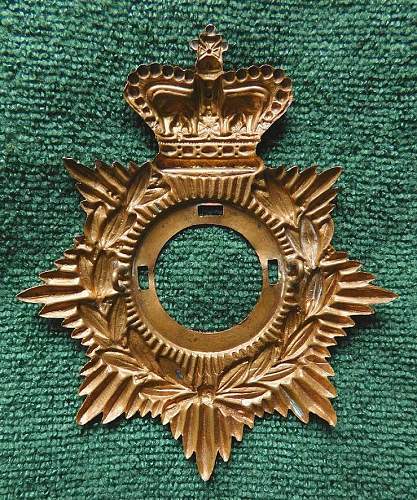As I mentioned previously on the subject of Fusilier Grenade badges, contrary to what many believe. The Glengarry Cap was worn by most British regiments from 1874 to 1895 not just Scottish regiments.
Until 1881 the main feature in unit badges was the regimental number in the order of precedence With the reforms of 1881 it was more like the symbology we recognise today after regiments adopted territorial titles rather than just the numbers.
During both periods the Glengarry badge was created by using the same centre from the helmet plate together with a seperately issued crown the two being fastened together with a brass plate and split pins on the inside of the cap.
The numbered badges are quite scarce whilst the titled types are less so but all are rather striking when seen on the cap. So I would like to start a thread with the intention of putting in one place as many Glengarry badges as possible (repetition is good for comparison too) from either period plus comments and discussion.
Let's see what members have.
Regards
Mark




 .
.







Bookmarks